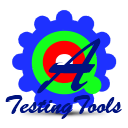You are here
Overview
A domain-specific language is created specifically to solve problems in a particular domain and is not intended to be able to solve problems outside it (although that may be technically possible). In contrast, general-purpose languages are created to solve problems in many domains. The domain can also be a business area. Some examples of business areas include: Domain-specific language for life insurance policies developed internally in large insurance enterprise >> Domain-specific language for combat simulation Domain-specific language for salary calculation >> Domain-specific language for billing A domain-specific language is somewhere between a tiny programming language and a scripting language, and is often used in a way analogous to a programming library. The boundaries between these concepts are quite blurry, much like the boundary between scripting languages and general-purpose languages.
In design and implementation Domain-specific languages are languages (or most often, declared syntaxes or grammars) with very specific goals in design and implementation. A domain-specific language can be either a visual diagramming language, such as those created by the Generic Eclipse Modeling System, programmatic abstractions, such as the Eclipse Modeling Framework, or textual languages. For instance, the command line utility grep has a regular expression syntax which matches patterns in lines of text. The sed utility defines a syntax for matching and replacing regular expressions. Often, these tiny languages can be used together inside a shell to perform more complex programming tasks. The line between domain-specific languages and scripting languages is somewhat blurred, but domain-specific languages often lack low-level functions for filesystem access, interprocess control, and other functions that characterize full-featured programming languages, scripting or otherwise. Many domain-specific languages do not compile to byte-code or executable code, but to various kinds of media objects: GraphViz exports to PostScript, GIF, JPEG, etc., where Csound compiles to audio files, and a ray-tracing domain-specific language like POV compiles to graphics files. A computer language like SQL presents an interesting case: it can be deemed a domain-specific language because it is specific to a specific domain (in SQL's case, accessing and managing relational databases), and is often called from another application, but SQL has more keywords and functions than many scripting languages, and is often thought of as a language in its own right, perhaps because of the prevalence of database manipulation in programming and the amount of mastery required to be an expert in the language. Further blurring this line, many domain-specific languages have exposed APIs, and can be accessed from other programming languages without breaking the flow of execution or calling a separate process, and can thus operate as programming libraries.
Programming tools Some domain-specific languages expand over time to include full-featured programming tools, which further complicates the question of whether a language is domain-specific or not. A good example is the functional language XSLT, specifically designed for transforming one XML graph into another, which has been extended since its inception to allow (particularly in its 2.0 version) for various forms of file system interaction, string and date manipulation, and data typing. In model-driven engineering many examples of domain-specific languages may be found like OCL, a language for decorating models with assertions or QVT, a domain specific transformation language. However languages like UML are typically general purpose modeling languages. To summarize, an analogy might be useful: a Very Little Language is like a knife, which can be used in thousands of different ways, from cutting food to cutting down trees. A domain-specific language is like an electric drill: it is a powerful tool with a wide variety of uses, but a specific context, namely, putting holes in things. A General Purpose Language is a complete workbench, with a variety of tools intended for performing a variety of tasks. Domain-specific languages should be used by programmers who, looking at their current workbench, realize they need a better drill, and find that a specific domain-specific language provides exactly that.
- Log in to post comments
Theme by Danetsoft and Danang Probo Sayekti
